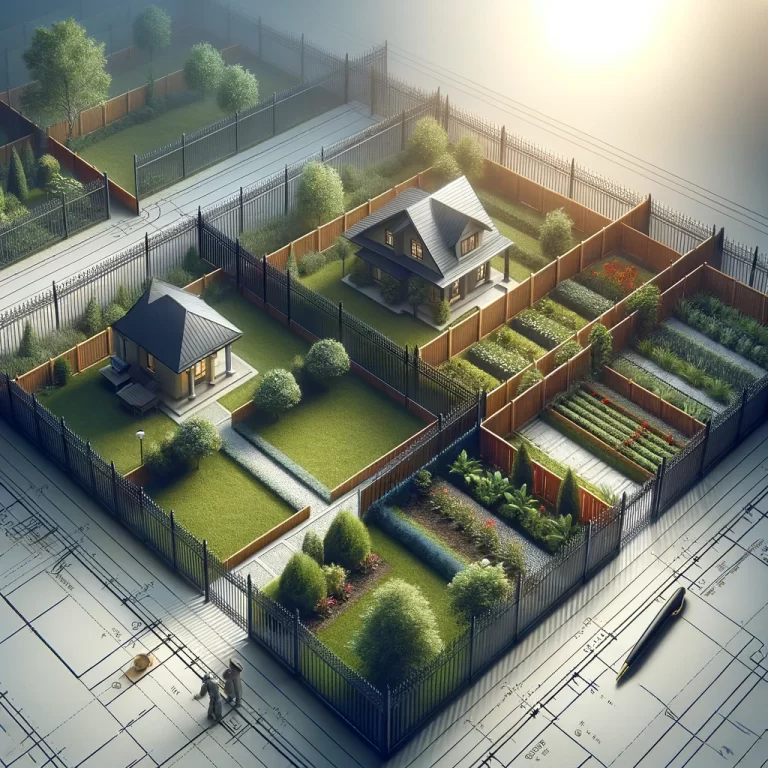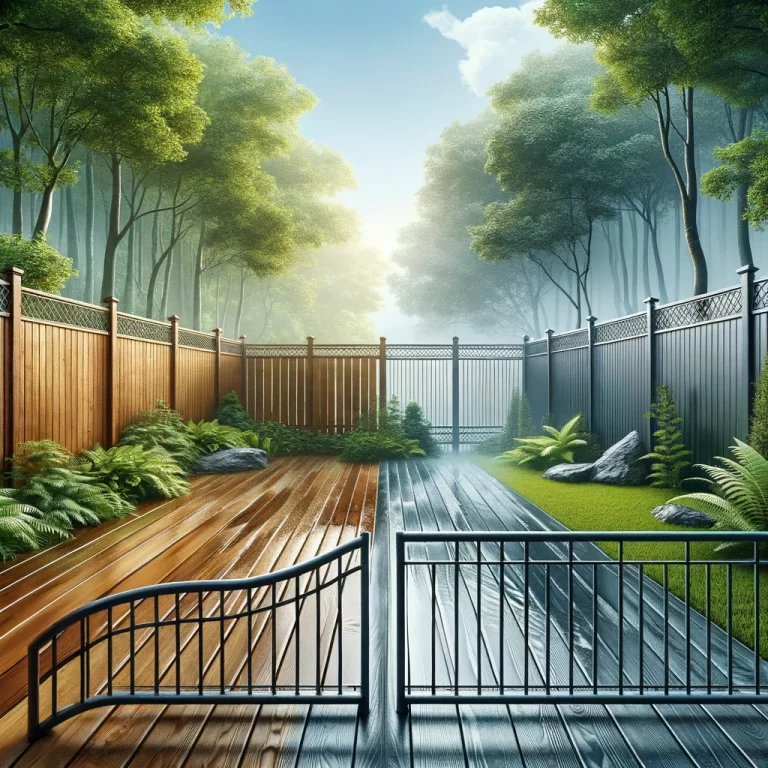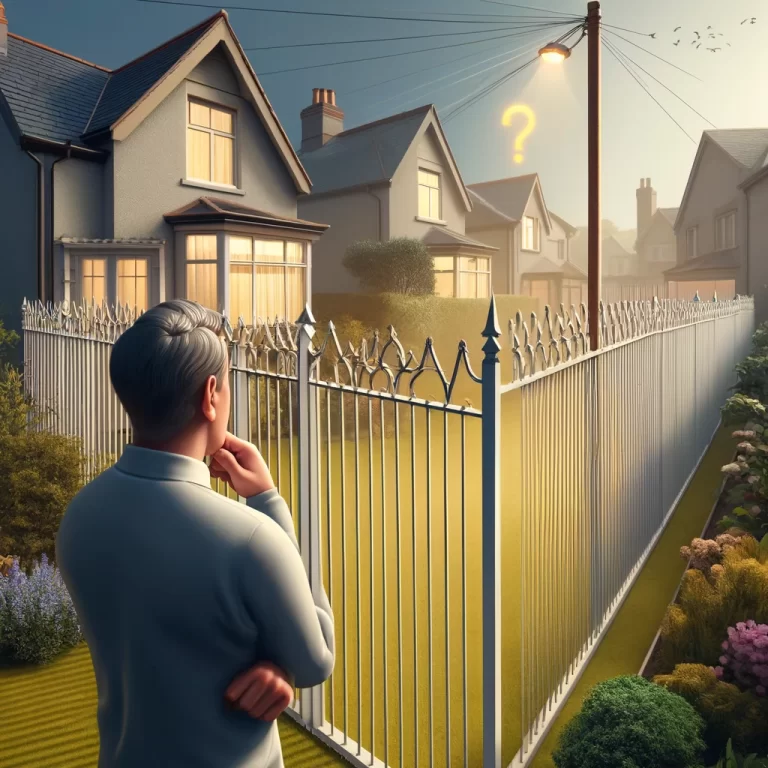Metal fences are a popular choice for homeowners looking for durability and security. The life expectancy of a metal fence can vary depending on several factors. In this article, we will explore the different types of metal fences, such as wrought iron, aluminum, and steel, and discuss what factors can affect their longevity. We will delve into how you can extend the life expectancy of your metal fence and how to recognise when it may be time for a replacement. Stay tuned to learn more about metal fences and how to keep them in top condition.
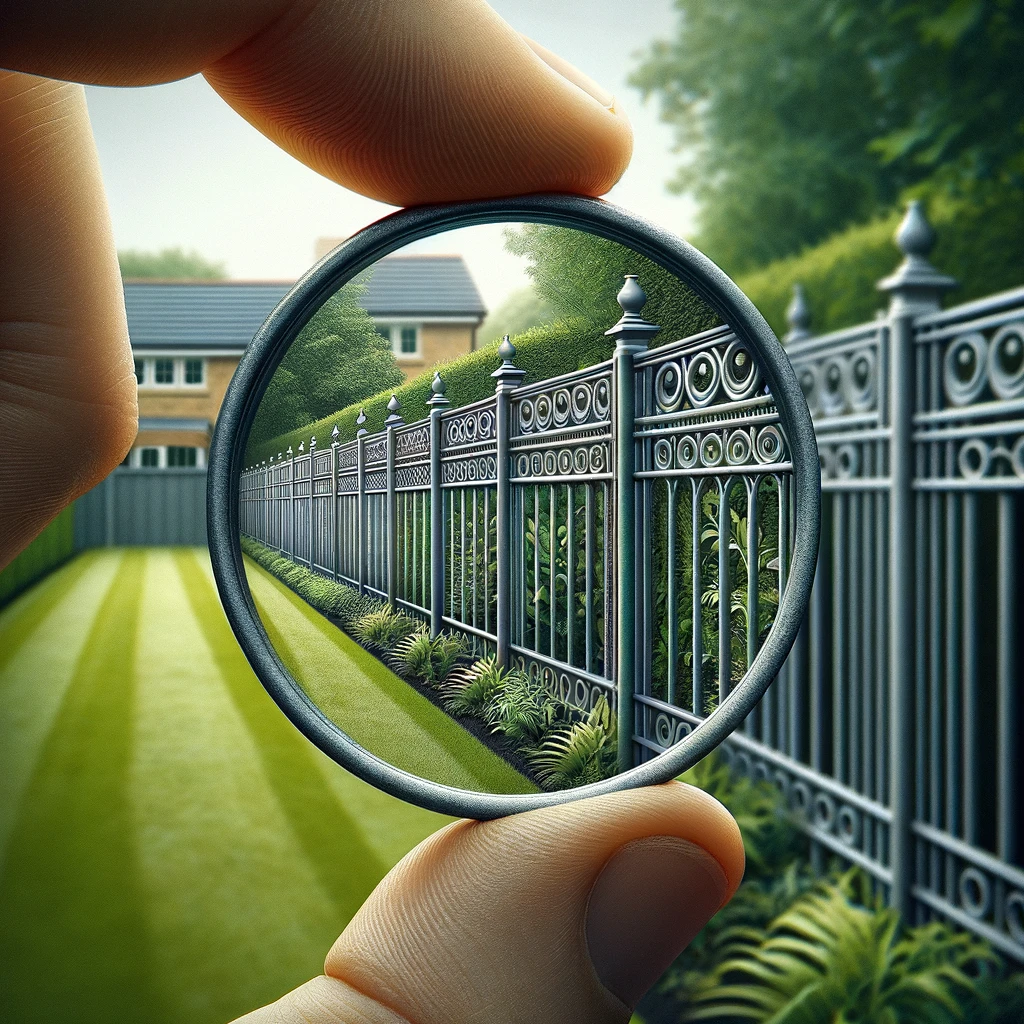
What Is A Metal Fence?
A metal fence is a type of barrier made from metal materials such as steel, aluminium, or wrought iron, designed to enclose an area for security, privacy, or aesthetic purposes.
Steel fences offer durability and strength, ideal for high-security areas due to their robust nature.
Aluminium fences, on the other hand, are lightweight yet sturdy, making them suitable for both residential and commercial properties.
Wrought iron fences, known for their timeless elegance, bring a touch of sophistication and charm to any property.
These metal fences not only provide security but also add kerb appeal, enhancing the overall aesthetics of the property.
What Are The Different Types Of Metal Fences?
Metal fences come in various types, including wrought iron fences, aluminium fences, and steel fences, each offering unique characteristics and benefits.
Wrought iron fences are renowned for their classic design and robustness, making them a popular choice for adding elegance and security to properties. On the other hand, aluminium fences are favoured for their lightweight nature, low maintenance requirements, and resistance to rust and corrosion. Similarly, steel fences are known for their strength, durability, and versatility, suitable for both residential and commercial applications.
Wrought Iron Fences
Wrought iron fences are known for their timeless elegance and robust construction, making them a popular choice for both residential and commercial properties seeking a classic yet durable fencing solution.
The intricate designs crafted in wrought iron fences add a touch of sophistication and charm to any property. The versatility of these fences allows for customization to suit diverse architectural styles and personal preferences. Along with their aesthetic appeal, wrought iron fences boast unmatched longevity, often lasting generations without significant wear or deterioration. Their corrosion resistance further enhances their durability, requiring minimal maintenance compared to other fencing materials.
Aluminium Fences
Aluminium fences offer a lightweight and low-maintenance fencing option that is resistant to corrosion, ideal for properties looking for a durable yet cost-effective solution.
One of the key advantages of aluminium fences is their exceptional resistance to corrosion, even in harsh weather conditions. This makes them a popular choice for outdoor use where exposure to elements like rain, snow, and sunlight is inevitable. Aluminium fences are typically coated with a protective layer of powder coating, further enhancing their longevity and durability.
Another appealing feature of aluminium fences is their ease of maintenance. Unlike traditional wrought iron or wood fences, aluminium fences do not require regular painting or staining to prevent rust or decay. Simply hosing them down occasionally or wiping them with a mild detergent is usually enough to keep them looking pristine.
Steel Fences
Steel fences provide a strong and secure fencing solution suitable for high-security applications, offering exceptional durability and longevity against harsh environmental conditions.
One of the key features that make steel fences stand out is their galvanisation process, which involves coating the steel with a protective layer of zinc to prevent rust and corrosion, ensuring long-lasting performance. The sturdy posts used in steel fences provide additional support and stability, enhancing the overall strength of the fence. The mesh design of steel fences adds an extra layer of security without compromising visibility, making them ideal for security-conscious environments. Along with their robustness, steel fences require minimal maintenance, making them a cost-effective and reliable fencing option.
What Factors Affect The Life Expectancy Of A Metal Fence?
Several factors influence the lifespan of a metal fence, including the quality of materials used, the precision of installation, and the level of maintenance and care it receives over time.
The treatment of the metal before installation plays a critical role in its durability. Proper treatment methods such as galvanizing ensure that the fence is protected from corrosion and rust caused by exposure to the elements.
The method of installation is vital. A fence that is not installed correctly may be more prone to structural weaknesses, reducing its overall longevity. It is essential to follow industry standards and guidelines to ensure a secure and stable installation.
The ongoing maintenance of the fence is key. Regular inspections, cleaning, and addressing any signs of damage promptly can significantly extend the lifespan of the metal fence.
Material Quality
The quality of the metal used in a fence significantly impacts its durability and resistance to factors such as corrosion, rust, and environmental wear, making high-grade materials essential for long-lasting installations.
- One of the key factors contributing to the longevity of metal fences is the use of corrosion-resistant metals. Metals such as zinc, commonly used in galvanized coatings, play a crucial role in protecting the fence from rust and decay caused by exposure to moisture and oxygen. Pre-galvanized materials undergo a process where a layer of zinc is applied to the metal before fabrication, providing enhanced protection.
- Employing premium alloys enriched with a rust inhibitor can further enhance the fence’s ability to withstand harsh environmental conditions, prolonging its lifespan and reducing maintenance requirements. These advanced materials not only ensure the structural integrity of the fence but also contribute to its aesthetic appeal over time.
Installation Quality
The precision and expertise applied during the installation of a metal fence play a critical role in its structural integrity, longevity, and overall performance, emphasising the necessity of professional installation services for optimal results.
Expert installation of metal fencing involves meticulous attention to detail, ensuring that fastenings are securely fixed and the fence is perfectly aligned. Professionals take into consideration the composition of the ground to determine the best anchoring methods, preventing movement or instability over time. Adherence to industry standards in positioning and construction protects the fence against potential gale forces, enhancing its durability and resilience. By relying on skilled professionals for the installation, homeowners can enjoy a robust and dependable fence that improves both security and visual appeal.
Maintenance and Care
Regular maintenance practices such as cleaning, repainting, and repairing damaged sections are essential for preserving the appearance, structural integrity, and longevity of a metal fence, reducing the risk of corrosion, rust, and degradation.
Weathering is a common foe of metal fences, gradually wearing them down over time. By incorporating routine maintenance, one can combat the effects of weather exposure. Cleaning with a gentle detergent and water solution helps remove dirt and grime, preventing buildup that can lead to corrosion.
Applying protective coatings like rust-inhibiting paint or sealants further shields the metal from environmental factors, extending its lifespan. Regular inspections to identify and promptly repair any loose bolts, dents, or rust spots are crucial in preventing larger-scale damage.
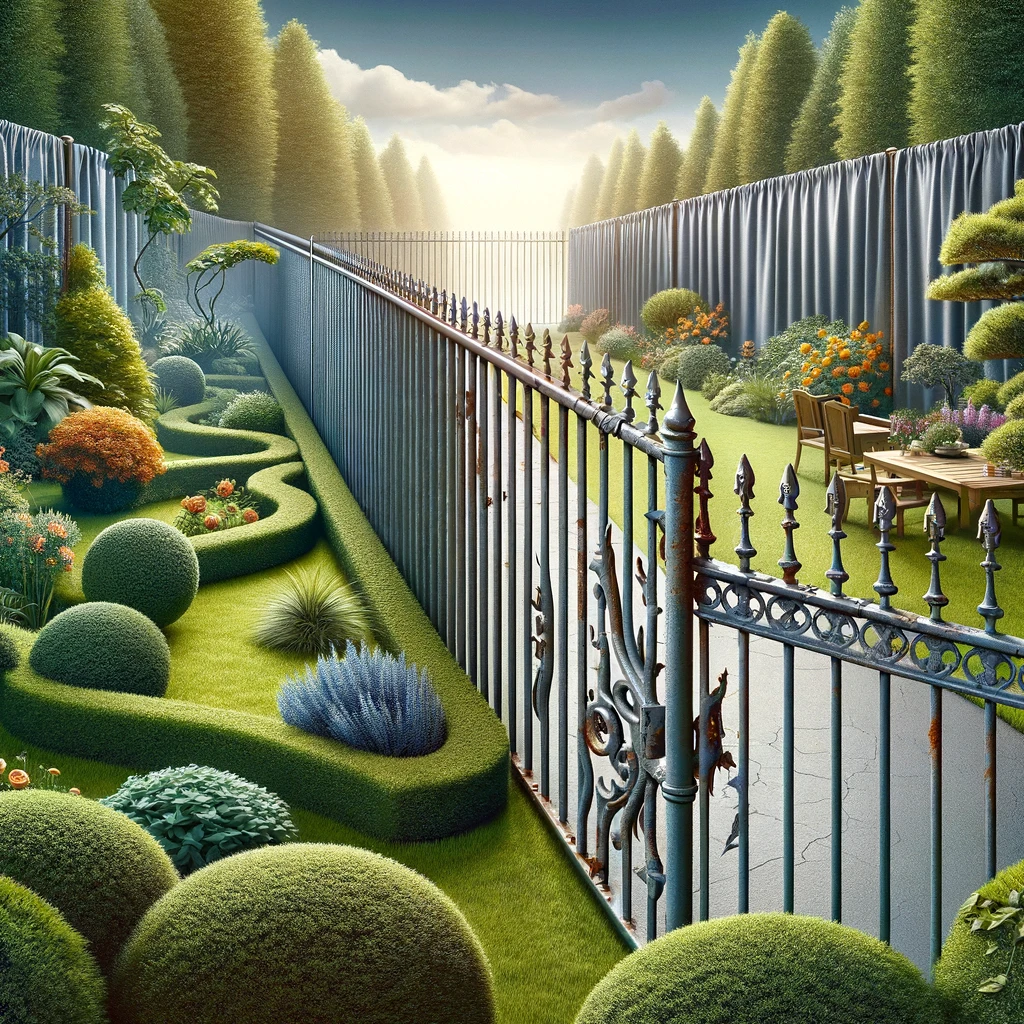
How Long Can A Metal Fence Last?
The longevity of a metal fence can vary depending on the type of metal used, with wrought iron, aluminium, and steel fences typically lasting between 20 to 30 years when properly maintained and cared for.
Wrought iron is renowned for its timeless elegance and sturdy construction. It is susceptible to rust over time if not properly galvanised. On the other hand, aluminium fences are lightweight, durable, and resistant to corrosion, making them ideal for areas prone to moisture. Steel fences, especially those that are galvanised or PVC-coated, offer exceptional strength and longevity, proving to be a reliable option in hurricane-prone regions. When considering a metal fence, it is crucial to factor in the environmental conditions and maintenance requirements to ensure the fence’s longevity.
Wrought Iron Fences (20-30 years)
Wrought iron fences can last between 20 to 30 years with proper care and maintenance, showcasing their exceptional durability and timeless appeal for property enclosures.
One of the key factors contributing to the long lifespan of wrought iron fences is their inherent resistance to corrosion, making them ideal for outdoor use in various climates. With the proper maintenance routine, which includes regular cleaning and inspections for signs of wear, these fences can withstand the test of time. The classic design elements of wrought iron fences, such as intricate scrollwork and sturdy construction, not only add aesthetic value but also enhance the security of the property.
Aluminum Fences (20-30 years)
Aluminium fences have a lifespan of 20 to 30 years under proper maintenance, offering a lightweight and durable fencing solution that withstands various environmental conditions.
One of the key factors contributing to the longevity of aluminium fences is their exceptional corrosion resistance. Unlike other materials like vinyl or PVC, aluminium is highly resistant to rust and decay, making it an ideal choice for areas exposed to moisture, such as marine environments. The low maintenance requirements of aluminium fences make them a cost-effective option over time, as they do not require frequent painting or sealing. Aluminium fences come in a wide range of designs and styles, allowing homeowners to customise their property’s appearance while still enjoying the benefits of a durable and long-lasting fencing solution.
Steel Fences (20-30 years)
Steel fences can endure for 20 to 30 years with proper care, offering robust security and long-term reliability against external elements such as weathering, soil erosion, and wind impact.
Chain link fences, popular for their affordability and versatility, are often made of steel. The gauge of the steel utilised significantly impacts the fence’s longevity; thicker gauges provide more durability, typically lasting longer than thinner options. Due to their strength and resilience, steel fences require minimal maintenance compared to wooden fences, reducing costs over time. Steel fences can be customised to suit various styles and aesthetic preferences, making them a practical choice for both residential and commercial properties.
What Are The Signs That A Metal Fence Needs To Be Replaced?
Determining when a metal fence requires replacement involves observing signs such as rust and corrosion, bent or damaged panels, and loose or missing parts that compromise the fence’s structural integrity and functionality.
One of the key indicators of a metal fence in need of replacement is the presence of extensive rust caused by prolonged exposure to the elements, particularly if the fence is made of materials like zinc that are prone to corrosion.
Bent components or panels that disrupt the fence’s straight alignment can signify underlying structural issues that necessitate attention. If you notice loose fixtures or missing parts, it is crucial to address these promptly to prevent further damage and ensure the fence’s stability. Ignoring these warning signs can lead to costly repairs in the future.
Rust and Corrosion
Rust and corrosion on a metal fence signal the onset of material degradation, requiring prompt attention to prevent structural weakness, aesthetic deterioration, and potential safety hazards associated with metal deterioration.
When left unchecked, rust can spread throughout the fence, compromising its structural integrity over time. The gradual decay caused by corrosion weakens the metal, making it more susceptible to damage and collapse. Along with the structural concerns, the unsightly appearance of rust can significantly diminish the overall aesthetics of the fence, detracting from the curb appeal of the property. This deterioration can be particularly problematic for fences that are not coated with vinyl or galvanized steel, as they lack the added protection against corrosion.
Bent or Damaged Panels
Bent or damaged panels in a metal fence compromise its appearance and functionality, necessitating timely repairs or replacements to restore the fence’s structural stability and visual appeal.
When left unattended, the repercussions of neglecting these issues can be substantial. The safety and security of the property may be compromised, as weakened sections could potentially fail, creating vulnerabilities in the perimeter. The aesthetics of the fence, which play a crucial role in the overall curb appeal, may deteriorate, affecting the property’s overall impression.
Therefore, it is imperative to address any bent or damaged panels promptly through either repairs, replacement sections, or even reinforcement with sturdy materials like spruce, cedar, or pine to reinforce the structure and prevent further damage.
Loose or Missing Parts
The presence of loose or missing parts in a metal fence compromises its security and functionality, warranting immediate attention to prevent breaches, collapses, or unauthorized access points along the perimeter.
When components in a metal fence are not securely fastened, the overall integrity of the structure is compromised, leading to various risks. Loose parts can weaken the entire fence, making it vulnerable to intruders or animals gaining entry. The erosion rates can increase, especially in areas prone to harsh weather conditions, further exacerbating the situation. Swift action is crucial to ensure that any damaged or missing parts are promptly repaired or replaced to maintain the necessary security measures intact. Enhancing the fence with reinforced posts and fixtures can contribute significantly to its durability and stability over time.
How Can You Extend The Life Expectancy Of A Metal Fence?
Extending the lifespan of a metal fence involves regular cleaning and maintenance practices, periodic repainting or coating applications, and prompt repairs of any damaged or deteriorating sections to ensure prolonged durability and aesthetic appeal.
For effective cleaning routines, using a gentle detergent and a soft brush can help remove dirt, grime, and other debris that may contribute to corrosion.
Paint coating or galvanizing the metal can provide a protective layer that enhances resistance to rust and weathering. Applying a layer of PVC coating can offer extra protection against scratches and impacts, further prolonging the fence’s lifespan. Regular inspections for signs of wear and tear, such as rust spots or loose components, allow for timely repairs to prevent extensive damage and maintain the fence’s structural integrity.
Regular Cleaning and Maintenance
Regular cleaning and maintenance of a metal fence involve removing debris, dirt, and contaminants that can contribute to corrosion, rust, or discoloration, preserving the fence’s appearance and structural integrity.
One crucial aspect of maintaining a metal fence is preventing rust formation, especially for aluminum and vinyl fences, which are particularly susceptible to oxidation. Applying a protective coating or treatment can significantly extend the lifespan of these fences by creating a barrier against moisture and environmental factors.
Regular inspections can help identify early signs of deterioration, allowing for timely repairs and minimising potential damages. By incorporating surface treatments and rust prevention measures into your maintenance routine, you can enhance the durability and aesthetics of your metal fence.
Repintado o Recubrimiento
Periodic repainting or coating of a metal fence helps protect the surface from environmental elements, corrosion, and UV damage, enhancing both the visual appeal and longevity of the fencing structure.
By adding a fresh coat of paint or protective finish, the metal mesh of the fence can resist rust and deterioration, providing an extra layer of defence against the harsh outdoor conditions. Durability is a key advantage, as the right coating can significantly extend the lifespan of the fence, reducing the need for repairs or replacement.
Repainting allows homeowners to personalise their property by choosing from a wide range of colour options that complement the overall aesthetics. Whether opting for bold shades to make a statement or subtle tones for a harmonious blend with the surroundings, the choice of colour can impact the kerb appeal and value of the property.
Applying a protective layer efficiently involves proper preparation, such as cleaning the surface thoroughly, priming if needed, and selecting suitable paints or coatings designed for weathering resistance and adhesion to metal.
Repairing Damaged Parts
Timely repair of damaged sections in a metal fence helps prevent further deterioration, structural weakness, and safety hazards, ensuring the fence remains functional, secure, and visually appealing.
When a metal fence gets damaged, especially in areas prone to extreme weather conditions like hurricanes, prompt repairs are essential to avoid exacerbating the existing issues. The restoration process typically involves assessing the damage, repairing or replacing sections, and reinforcing weak points to enhance overall durability.
Cost-effective methods such as welding, patching, or using specialised metal bonding agents can be employed to restore the fence’s integrity without incurring high expenses. It is crucial to consider the longevity of the materials used to ensure a sturdy long-term solution.



